 W
WKathleen Balfe was an Irish nationalist who was a founder member of Cumann na mBan in Drogheda and the first woman member of the Drogheda corporation in 1967.
 W
WÚna Brennan (1888–1958) was an Irish republican and feminist, active during the Easter Rising of 1916 and both the War of Independence and Civil War.
 W
WBridie O'Mullane, was a recruiting officer for Cumann na mBan during the Irish War of Independence and the Director of Publicity and Propaganda during the Irish Civil War.
 W
WMargaret Buckley was an Irish republican and president of Sinn Féin from 1937 to 1950. She was the first female leader of Sinn Féin and was the first Irishwoman to lead a political party.
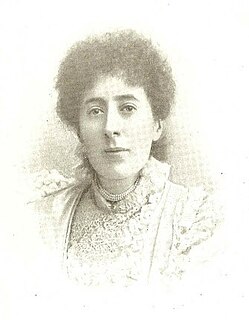 W
WEthna Carbery, born Anna Bella Johnston, was an Irish journalist, writer and poet. She is best known for the ballad Roddy McCorley and the Song of Ciabhán; the latter was set to music by Ivor Gurney. In Belfast in the late 1890s, with Alice Milligan she produced The Shan Van Vocht, a nationalist monthly of literature, history and comment that gained a wide circulation in Ireland and in the Irish diaspora. Her poetry was collected and published after her death under the pen name Ethna Carberry, adopted following her marriage to the poet Seumas MacManus in 1901.
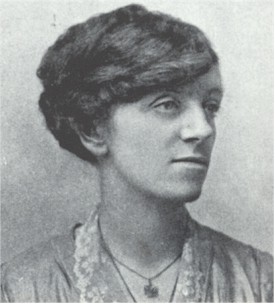 W
WMaria Winifred Carney, also known as Winnie Carney, was an Irish suffragist, trade unionist, and Irish independence activist.
 W
WAlice Mary Cashel was an Irish nationalist, County Councillor and judge. She was a founding member, with Annie McSwiney, of the Cork Cumann na mBan.
 W
WKathleen Clarke was a founder member of Cumann na mBan, a women's paramilitary organisation formed in Ireland in 1914, and one of very few privy to the plans of the Easter Rising in 1916. She was the wife of Tom Clarke and sister of Ned Daly, both of whom were executed for their part in the Rising. She was subsequently a Teachta Dála and Senator with both Sinn Féin and Fianna Fáil, and the first female Lord Mayor of Dublin (1939–41).
 W
WBridget Connolly was an Irish nationalist and republican, active during the Easter Rising of 1916 and believed to be the only person from County Carlow to be in the General Post Office, Dublin, during the Easter Rising. She also served during both the War of Independence and the Irish Civil War.
 W
WThe Cooney sisters were three Irish sisters, notable for their involvement in Irish Nationalism and Cumann na mBan.
 W
WThe Cooney sisters were three Irish sisters, notable for their involvement in Irish Nationalism and Cumann na mBan.
 W
WMarcella Cosgrave was an Irish nationalist. She was a founder member of Inghinidhe na hÉireann and Cumann na mBan and took part in the 1916 Easter Rising and Irish War of Independence.
 W
WEithne Coyle was an Irish republican activist. She was a leading figure within Cumann na mBan and a member of the Gaelic League. However, her role in the period now known as 'revolutionary Ireland' (c1912-c1924) was more extensive than her membership of these two groups indicates. A letter from Peader O'Donnell dated 19 April 1945 in support of her application for a military service application noted she was targeted severely during the Irish Civil War by the Irish Free State forces who 'regarded her more as an IRA officer than as Cumann na mBan organiser, which indeed she was'. She would also become notorious for her involvement in two high-profile prison escapes in the 1920s.
 W
WSidney Sarah Madge Czira, known by her pen name John Brennan, was a journalist, broadcaster, writer and revolutionary. She was an active member of the revolutionary group Inghinidhe na hÉireann and wrote articles for its newspaper, Bean na h-Éireann, and for Arthur Griffith's newspaper Sinn Féin.
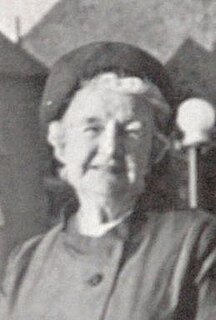 W
WLeslie Mary de Barra was an Irish nationalist and republican active during the Easter Rising of 1916, the War of Independence and the Civil War, becoming Director of Cumann na mBan. She went on to be chairman and President of the Irish Red Cross.
 W
WCharlotte Despard was an Anglo-Irish suffragist, socialist, pacifist, Sinn Féin activist, and novelist. She was a founding member of the Women's Freedom League, Women's Peace Crusade, and the Irish Women's Franchise League, and an activist in a wide range of political organizations over the course of her life, including among others the Women's Social and Political Union, Humanitarian League, Labour Party, Cumann na mBan, and the Communist Party of Great Britain.
 W
WGeraldine "Gerry" Plunkett Dillon was an Irish republican and member of Cumann na mBan, best known for her memoir "All in the blood". She was the sister of Joseph Mary Plunkett, a signatory of the 1916 Proclamation of the Irish Republic.
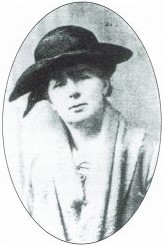 W
WMargaret Emmeline Dobbs was an Irish scholar and playwright, best known for her work to preserve the Irish language.
 W
WMáire Drumm was the vice-president of Sinn Féin and a commander in Cumann na mBan. She was killed by Ulster loyalists while recovering from an eye operation in Belfast's Mater Hospital. As Vice President of Sinn Féin, she was known for her fierce and divisive rhetoric which did not shy away from embracing violence.
 W
WLouise Gavan Duffy was an educator, an Irish language enthusiast and a Gaelic revivalist, setting up the first Gaelscoil in Ireland. She was also a suffragist and Irish nationalist who was present in the General Post Office, the main headquarters during the 1916 Easter Rising.
 W
WThe Elliott sisters, Emily and Eilís, were two Irish sisters notable for their involvement in Irish Nationalism, especially in the Easter Rising in 1916. They were founder members of Cumann na mBan.
 W
WAda (Adeline) English was an Irish revolutionary politician and psychiatrist.
 W
WMay Bridget Gibney was an Irish nationalist and republican, active during the Easter Rising of 1916 and both the War of Independence and the Irish Civil War.
 W
WMary Ellen Humphreys was an Irish revolutionary, Cumann na mBan leader and Dublin city councillor active in the period from 1916 to 1923. Born in Ballylongford, Co. Kerry to Richard Rahilly and Ellen Mangan, she was a sister of the 1916 leader The O'Rahilly and the republican activist Anno O'Rahilly. She married Dr. David Humphreys of Limerick Workhouse in 1895. Her father-in-law was the Co. Limerick Poor Law Guardian, James Humphrys. Her son Dick Humphreys joined the Irish Volunteers and was active in Easter week. Her daughter Sheila Humphreys became a Cumann na mBan leader and republican activist.
 W
WSheila Humphreys, also known as Sighle Humphreys, was an Irish political activist and member of Cumann na mBan.
 W
WLily Kempson was an Irish revolutionary who took part in the 1916 Easter Rising in Dublin. Born Elizabeth Anne Kempson in County Wicklow, Ireland, she is remembered as an trade union activist and lecturer, as well as an insurrectionist in the Irish Citizen Army. She was the last surviving participant of the Easter Rising.
 W
WDorothy Macardle was an Irish writer, novelist, playwright, and non-academic historian. Her book, The Irish Republic, is one of the more frequently cited narrative accounts of the Irish War of Independence and its aftermath, particularly for its exposition of the anti-treaty viewpoint.
 W
WSorcha MacMahon was an Irish nationalist and republican who was active during the Easter Rising of 1916 and both the War of Independence and the Irish Civil War.
 W
WMary MacSwiney was an Irish politician and educationalist. In 1927 she became leader of Sinn Féin when Éamon de Valera resigned from the presidency of the party.
 W
WConstance Georgine Markievicz, known as Countess Markievicz, was an Irish politician, revolutionary, nationalist, suffragist, socialist, and the first woman elected to the Westminster Parliament, and was elected Minister for Labour in the First Dáil, becoming the first female cabinet minister in Europe. She served as a Teachta Dála for the Dublin South constituency from 1921 to 1922 and 1923 to 1927. She was a Member of Parliament (MP) for Dublin St Patrick's from 1918 to 1922.
 W
WRose McNamara was an Irish nationalist, republican, and Vice Commandant during the Easter Rising of 1916.
 W
WHelena Mary Molony was a prominent Irish republican, feminist and labour activist. She fought in the 1916 Easter Rising and later became the second woman president of the Irish Trades Union Congress.
 W
WElizabeth O'Farrell was an Irish nurse, republican and member of Cumann na mBan, best known for delivering the surrender in the Easter Rising of 1916.
 W
WElizabeth ‘Lily’ O'Brennan, was an Irish republican, writer and playwright.
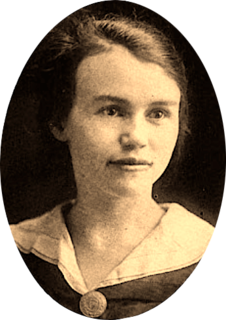 W
WNora Connolly O'Brien was an Irish politician, activist and writer. She was a member of the Irish Senate.
 W
WAgnes O'Farrelly, was an academic and Professor of Irish at University College Dublin (UCD). She was also the first female Irish-language novelist, a founding member of Cumann na mBan, and fourth president of the Camogie Association.
 W
WNancy (Brown) O'Rahilly (1878 –1961) was an American-born Irish nationalist who was involved in the founding and early activities of several institutions in Ireland in the early 20th century.
 W
WFiona Plunkett was an Irish republican involved in the organisation of the Easter 1916 Rising and a leading member of Cumann na mBan.
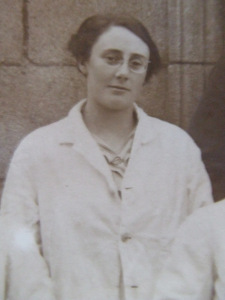 W
WDorothy Stopford Price was an Irish physician who was key to the elimination of childhood tuberculosis in Ireland by introducing the BCG vaccine.
 W
WMary Josephine "Min" Ryan was an Irish Nationalist. A member of Cumann na mBan and the honorary secretary of the executive committee, she took part in the 1916 Easter Rising and the War of Independence.
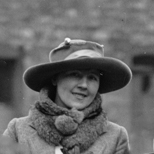 W
WMary Kate Ryan was an Irish academic and the first woman lecturer in University College Dublin's French Department as well as being a political activist who was involved in Ireland's Easter Rising, War of Independence and Civil War.
 W
WNell Ryan was an Irish nationalist, Cumann na mBan organiser and County Councillor. She was a member of the republican Ryan family of Tomcoole. Despite not being involved in the 1916 Rising, she was arrested and imprisoned. On release she joined Sinn Féin and was a regional organiser for Cumann na mBan in Wexford. She was arrested for anti-Treaty activity during the Civil War and went on hunger strike with other female prisoners. She was the first woman elected to Wexford County Council.
 W
WPhilomena Frances Ryan was an Irish chemist and nationalist and wife of the 2nd President of Ireland, Seán T. O'Kelly.
 W
WMargaret Frances Skinnider was a revolutionary and feminist born in Coatbridge, Scotland. She fought during the 1916 Easter Rising in Dublin as a sniper, among other roles, and was the only female wounded in the action. As a scout, she was praised for her bravery. Sadhbh Walshe in The New York Times refers to her as "the schoolteacher turned sniper".
 W
WLucy Agnes Smyth Byrne (1882–1972) was an officer in Cumann na mBan, an Irish republican women's paramilitary organisation, during the time of the 1916 Easter Rising. She played a prominent role in the organisation as she was the section leader of its Central branch, and eventually in later years became its 1st Lieutenant.
 W
WBrigid Lyons Thornton was a member of Cumann na mBan, an officer in the Irish Free State Army and a physician. Thornton was a rebellious character whom from a young age was involved in a Nationalist movement. Her first small involvement was selling badges and flags at the O'Donovan Rossa funeral.
 W
WJane Wyse Power was an Irish activist, feminist, politician and businesswoman. She was a founder member of Sinn Féin and also of Inghinidhe na hÉireann. She rose in the ranks to become one of the most important women of the revolution. As President of Cumann na mBan, she left the radicalised party and formed a new organisation called Cumann na Saoirse, holding several senior posts in the Dáil during the Free State.
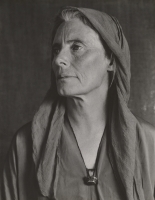 W
WElla Young was an Irish poet and Celtic mythologist active in the Gaelic and Celtic Revival literary movement of the late 19th and early 20th century. Born in Ireland, Young was an author of poetry and children's books. She emigrated from Ireland to the United States in 1925 as a temporary visitor and lived in California. For five years she gave speaking tours on Celtic mythology at American universities, and in 1931 she was involved in a publicized immigration controversy when she attempted to become a citizen.